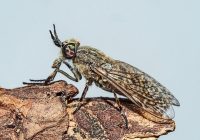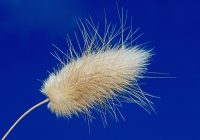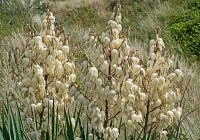Dr Phil Smith’s Wildlife Notes
July 2022
Global warming and associated climate change is now well and truly with us. The Met. Office says that July was the driest in England since 1935 and the driest ever in the south-east. New temperature records were set, including the first time that 40oC was reached in the UK (on 19th). Luckily, it was about 10o lower here and the heat-wave only lasted a few days. Useful rainfall fell on ten days at the beginning and end of the month but this didn’t prevent the dune water-table falling by 10 cm. By the end of the month and despite their pathological hatred of rain, the TV weather presenters began to acknowledge a major national drought!
Fortunately, most of our sand-dune flora and fauna are well-adapted to dry conditions but some groups continued to struggle. Butterflies were generally in short supply, the chief exception being the Gatekeeper, which was abundant throughout the duneland. Hoverflies were mostly down in numbers and variety until the second week, when our two largest species, the Hornet and Lesser Hornet Plumehorn started to appear in numbers never seen before. Evolved to mimic Hornets, these impressive but harmless creatures are recent arrivals in the Northwest. Being too big to hover, they just crash-land on flowers. Modest numbers are usually recorded each year but July saw double figures of both in favoured spots, especially on thistles and Canadian Goldenrod. This was a national phenomenon, hundreds being reported all over the country. These insects lay their eggs in wasp nests where their larvae feed on detritus or, perhaps, wasp grubs. They are therefore less affected by the drought than the many hoverflies whose larvae depend on wet soils.
There were many other insect highlights during the month. As I walked along sandy paths through the dunes, the large Dune Robberfly was an almost constant companion flying and settling a few metres ahead. This species is usually common but that cannot be said for the Dune Villa, a type of bee-fly found only on larger dune-systems. This year, there were many more than usual, Pete Kinsella reporting dozens during his long walks. Even I managed to catch up with several. They are wary and difficult to photograph, as are Northern Dune Tiger Beetles. As a general rule, these flagship beetles are not seen in July, there being a gap after the spring hatch and before the second generation appears in August. Presumably due to the higher temperatures, they emerged early; I saw them regularly from mid-month onwards. During a visit to Hightown dunes I ‘potted’ a Notch-horned Cleg that landed on my trousers. This is not the most popular of insects, having a nasty bite. I wanted to take close-up photographs to show its amazingly colourful eyes. A patch of Canadian Goldenrod at Ravenmeols produced several interesting insects, including all three of our Conopsspecies. These are so-called ‘bee-grabbers’ that lay their eggs on bees visiting flowers. Amongst over 50 Gatekeepers I found the remarkable looking parasitic fly Phasia hemiptera that has metallic-blue patches on its black wings. The yellow flower-heads of Wild Parsnip are another great attraction to insects, as on 5th, when I was delighted to find a Ruby-tailed Wasp with several other solitary wasps on parsnip at Falklands Way, Ainsdale. A movement on a sandy path was a worker ant trying to drag away a winged reproductive several times its size, its red legs indicating one of the Formicaspecies. A Garden Warbler was singing from dense cover near to a patch of the non-native Hare’s-tail grass with stunning seed-heads. A Yucca in full flower reminded me that this garden-escape can become invasive. However, when I first recorded this individual in July 2010 it had a single flower-spike; now it has four but no offspring.
During the month, I began a study of the Variegated Horsetail, a plant with a mainly northern and western UK distribution that has been described as “vanishingly rare in lowland England.” We have lots of it in dune-slacks and scrapes all along the coast. Since 2007, I recorded the plant whenever I came across it. Revisiting the more accessible sites, I found that it still survives in most of them but, as expected, the spread of coarse vegetation and scrub has done for it in several places. A long walk to two sites in the Birkdale Sandhills Local Nature Reserve failed to re-find the horsetail but an unexpected bonus was a large population of Lesser Water-plantainin an old scrape. This plant is Red-listed ‘vulnerable’ in England. I also confirmed that one of our largest colonies of Flat-sedge (also ‘vulnerable’) is still flourishing on the edge of another scrape. A particularly large population of Variegated Horsetail in a Natterjack Toad scrape at Hightown dunes is being invaded by Sea Buckthorn. Last winter I cut or pulled up a lot of it and did the same to regrowth during my visits this month.
Following up an email from Steve Cross, I went to Kirklake Road, Formby, to investigate an “exotic” flora that had colonised disturbed ground where many conifers were brought down by ‘Storm Arwen’ in November 2021. Sure enough, there was a spectacular variety of ruderals, garden escapes and bird-seed aliens, including species that are rarely seen ‘in the wild’, such as Crown Daisy, Moldavian Balm, Red Flax and Tricoloured Convolvulus. However, the mystery of their origin was solved in conversation with a local resident who said that her brother had shaken out the remains of a box of ‘wildflower seed’ on the site in the early part of the year.
I don’t do as many guided walks these days but arranged to meet enthusiastic members of the Liverpool Botanical Society at the Devil’s Hole on 16th. As well as showing them the incredible flora (over 170 higher plants!), I was able to measure the water-table, sell a copy of my wildflower book and recruit a volunteer for ‘Buckthorn Bashes’ in the autumn. The old adage about birds and stones came to mind!






